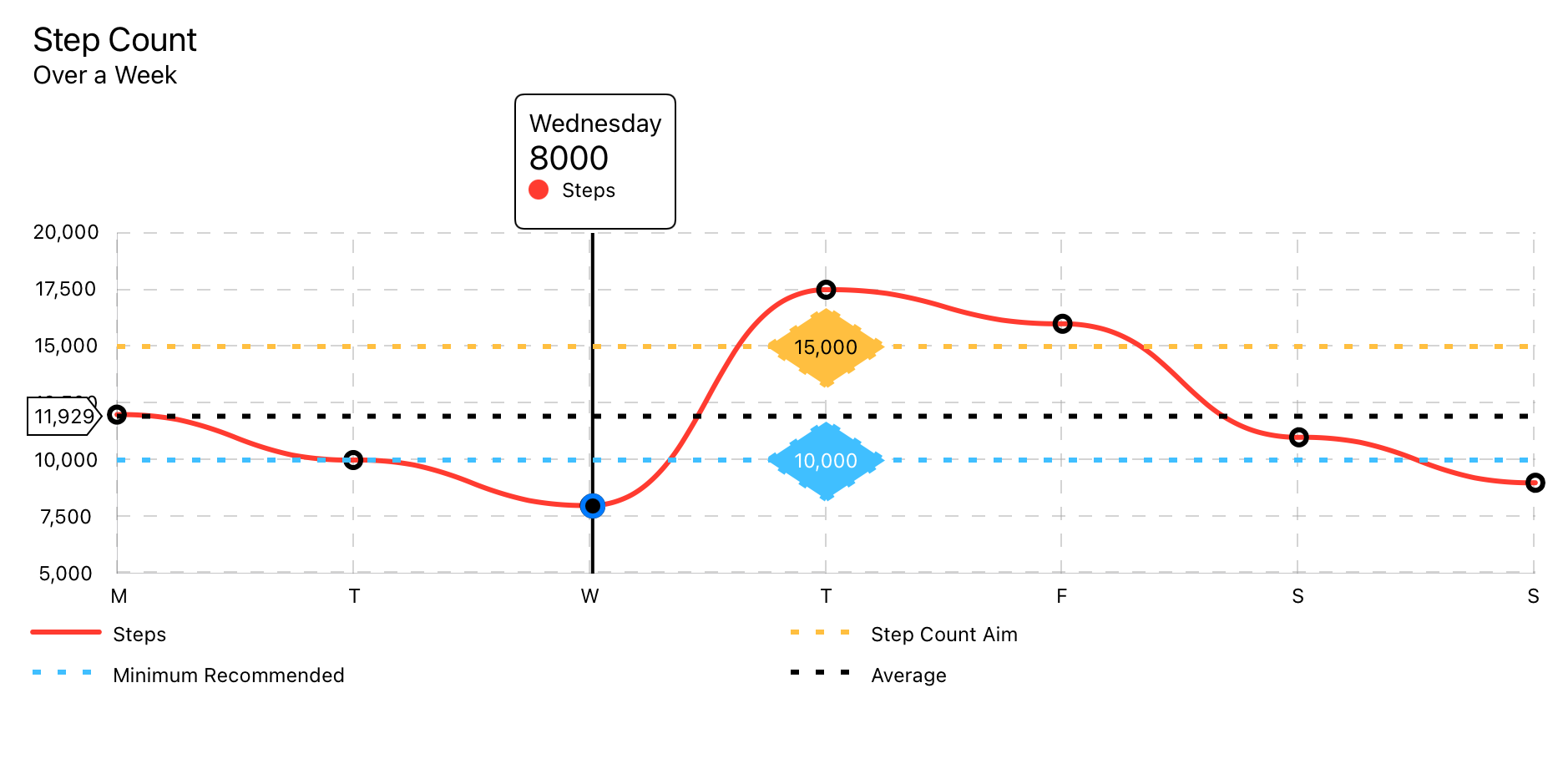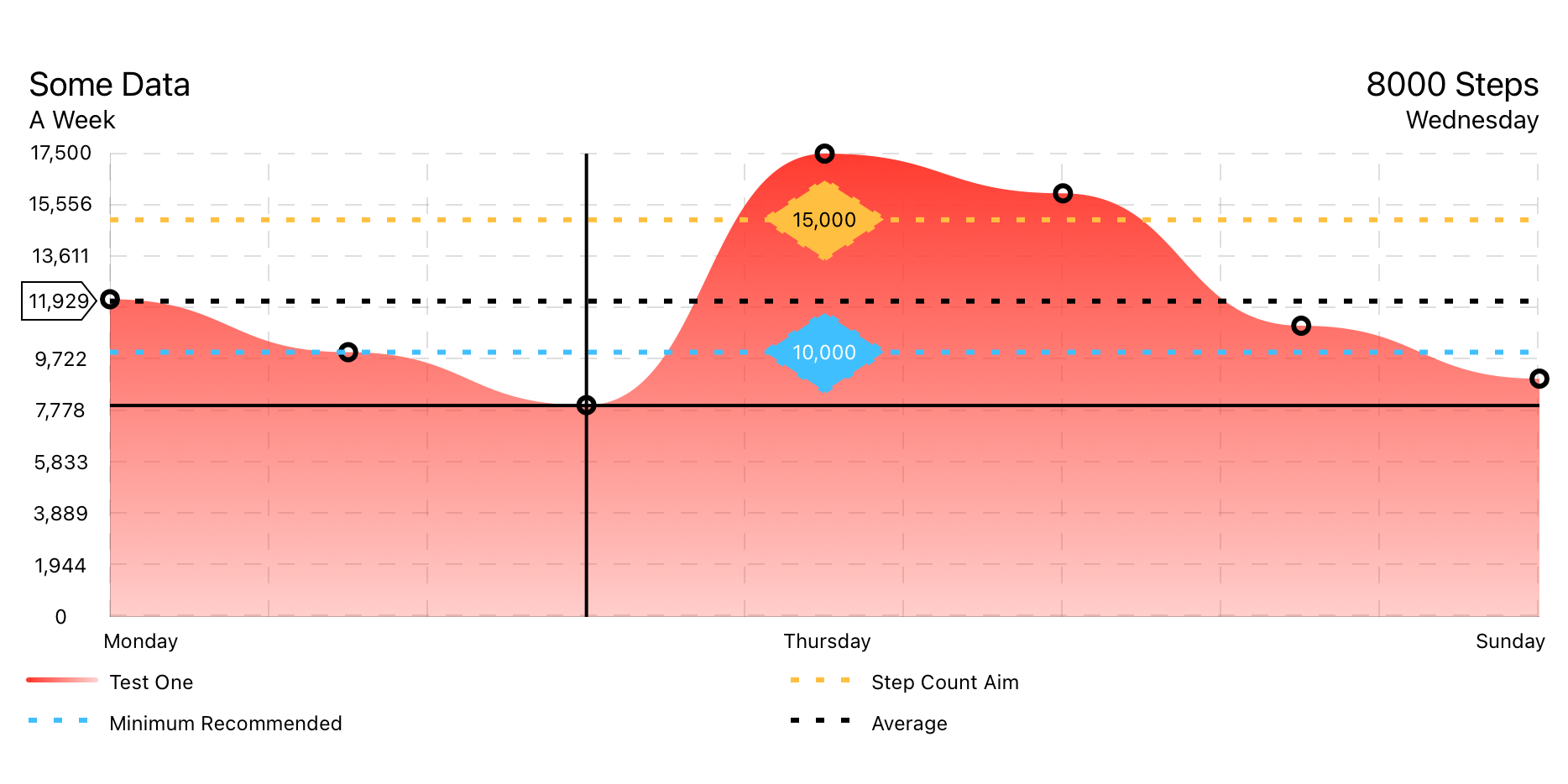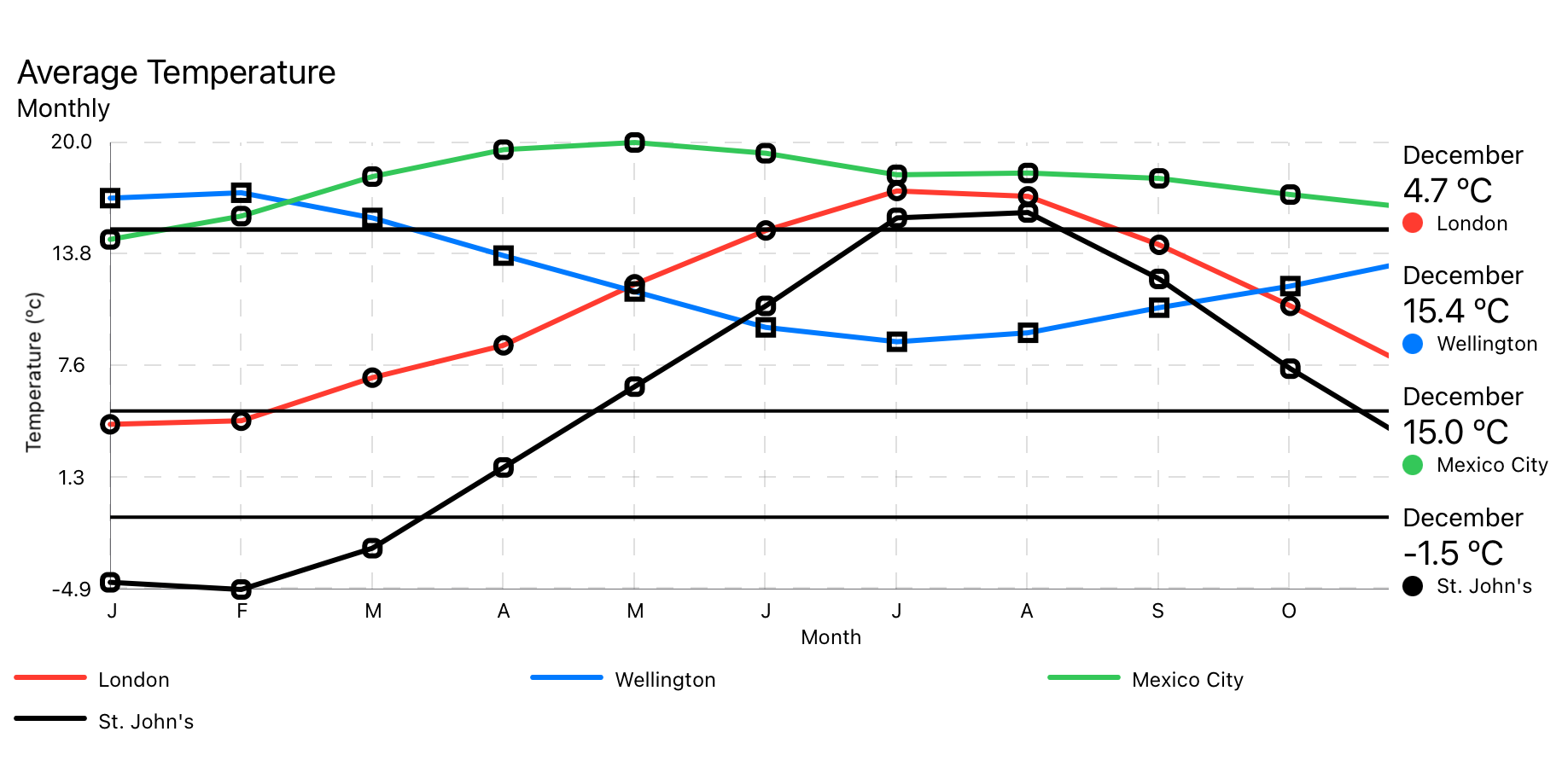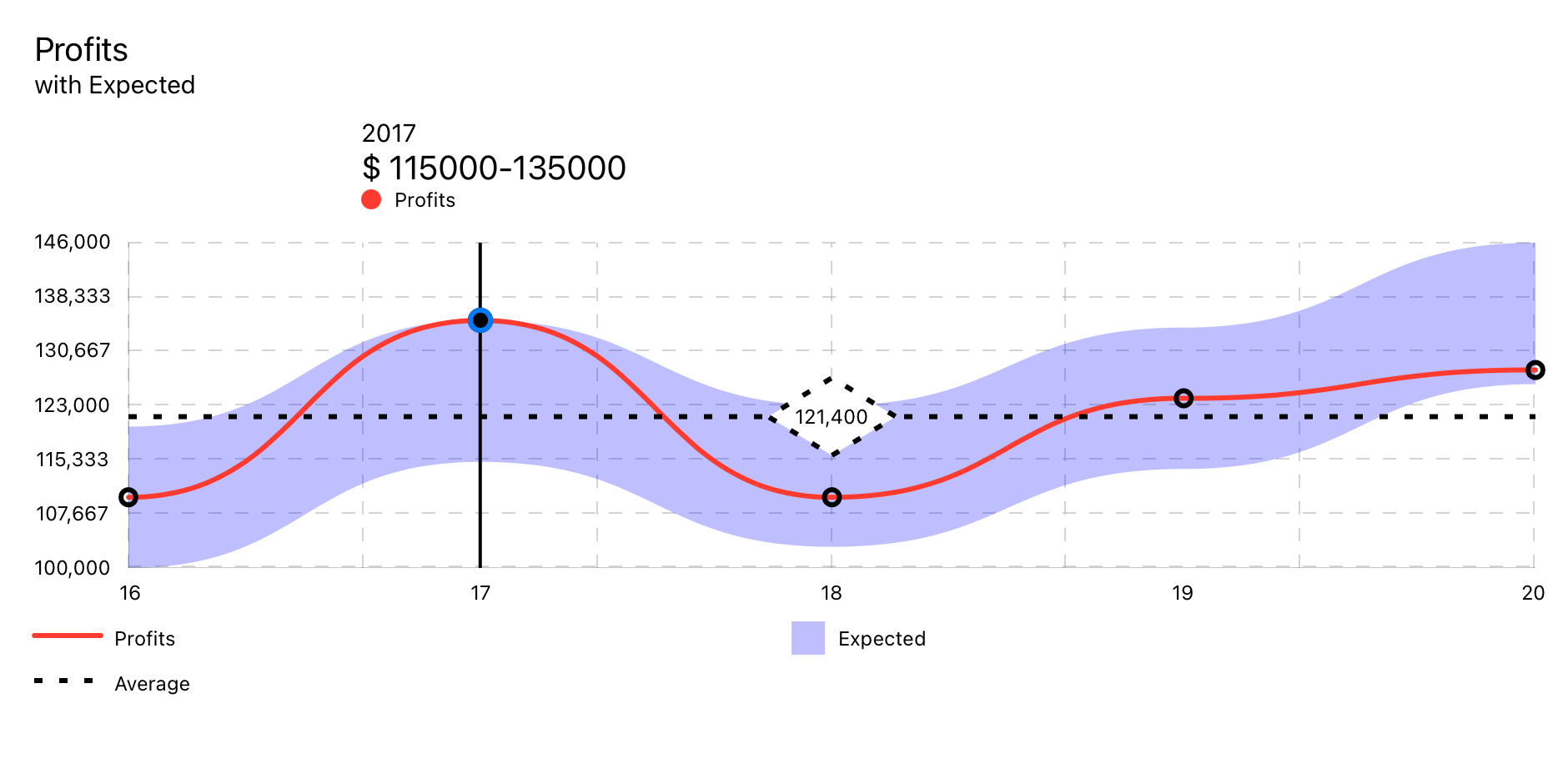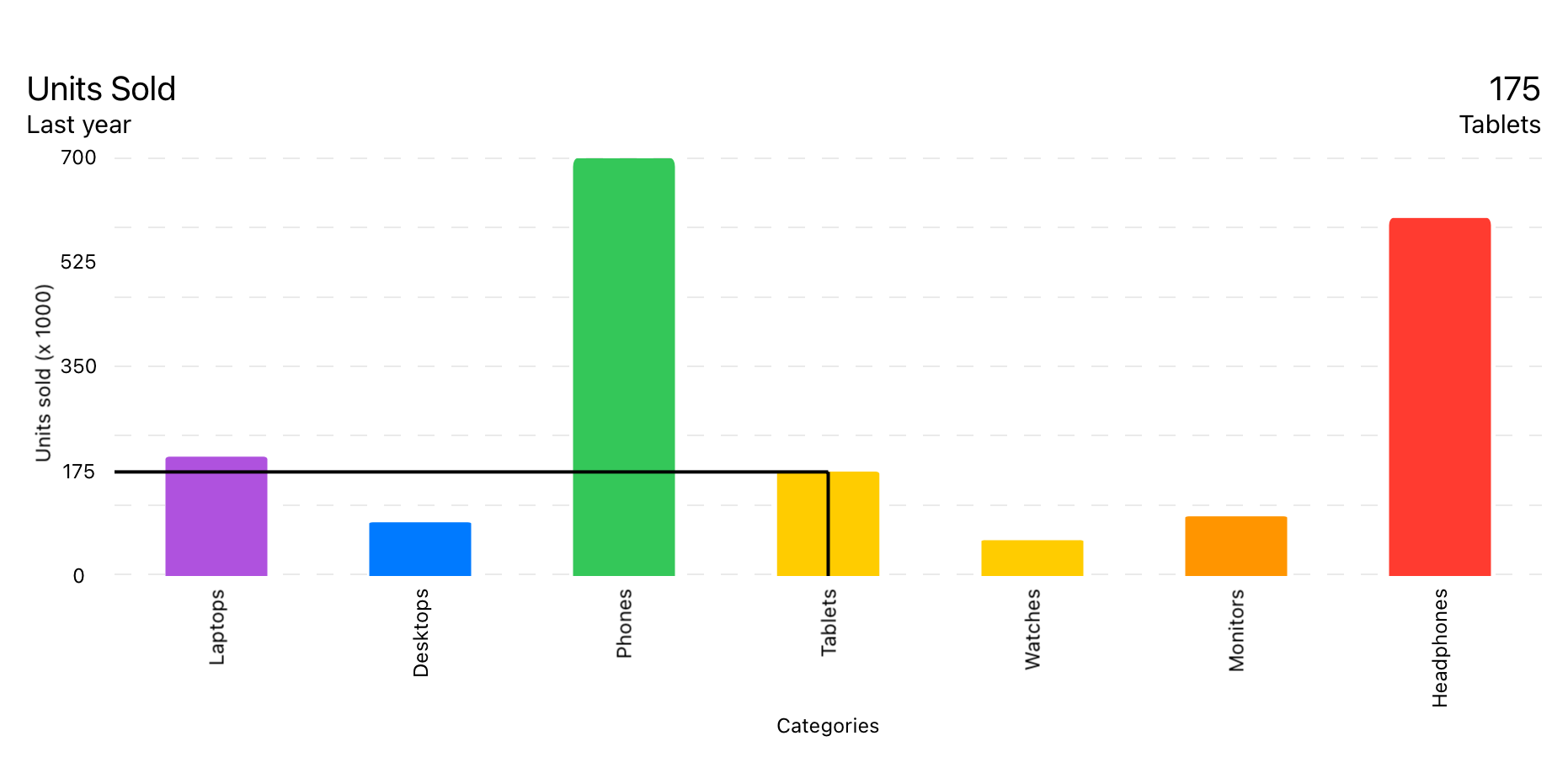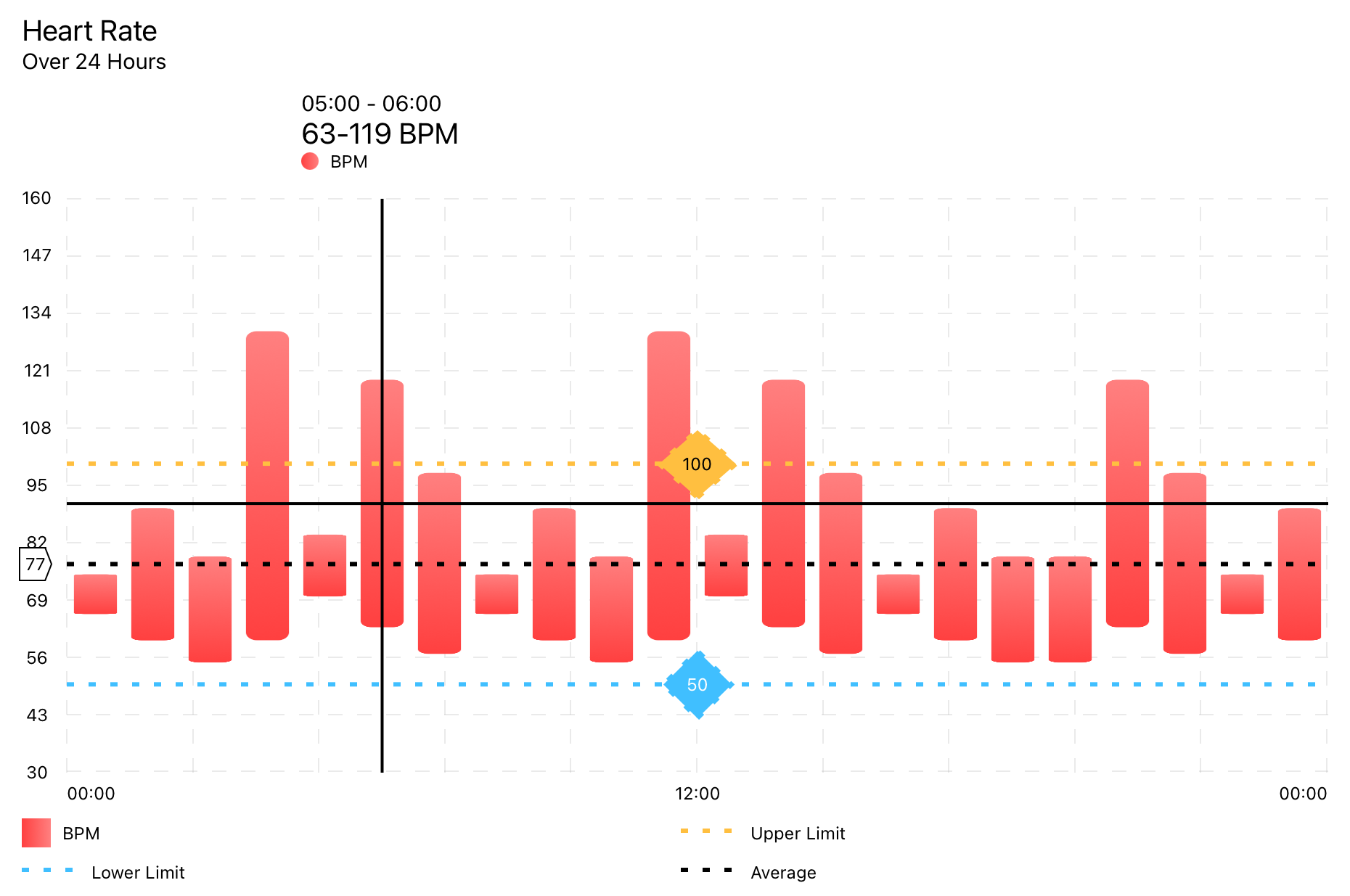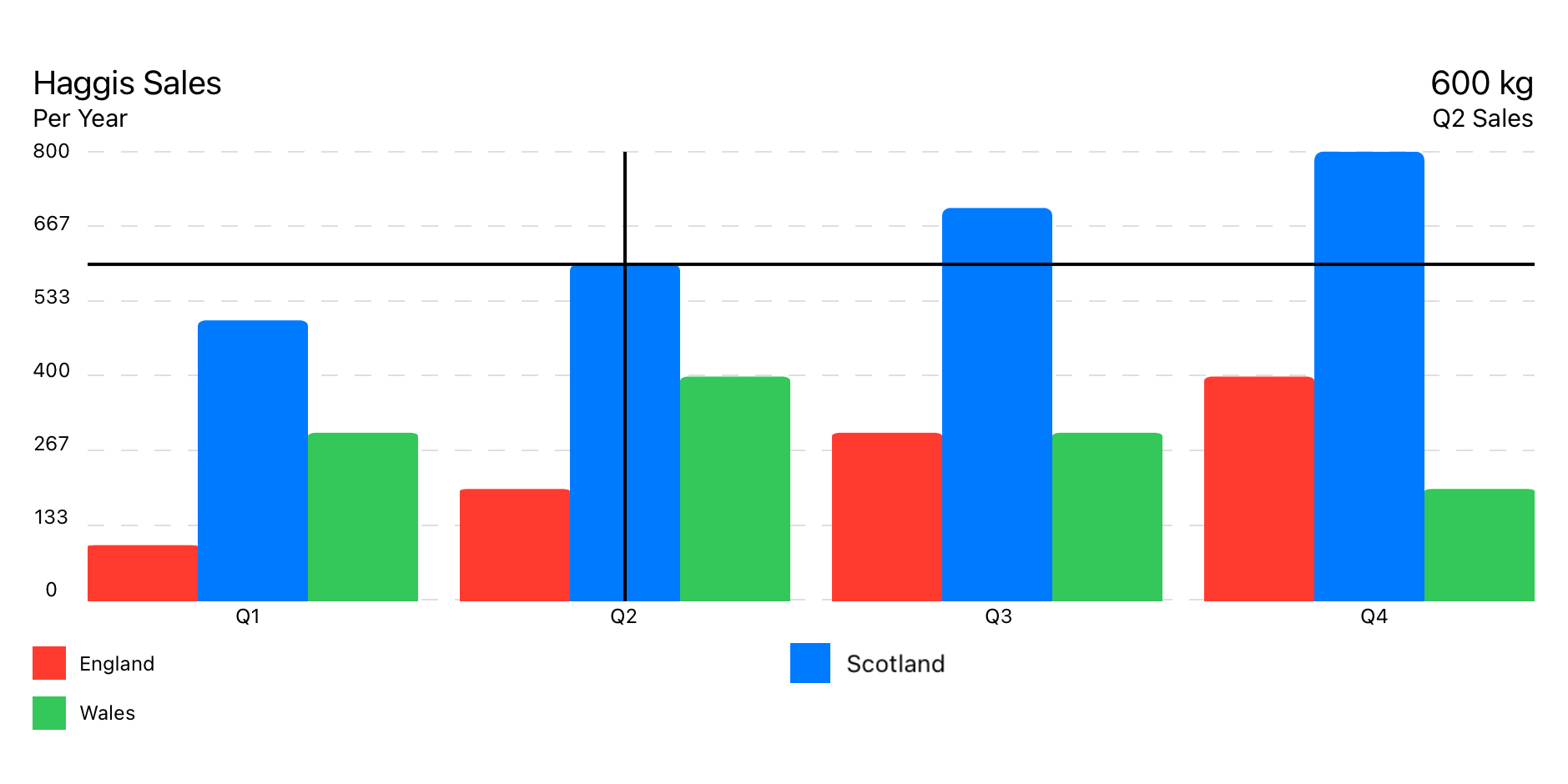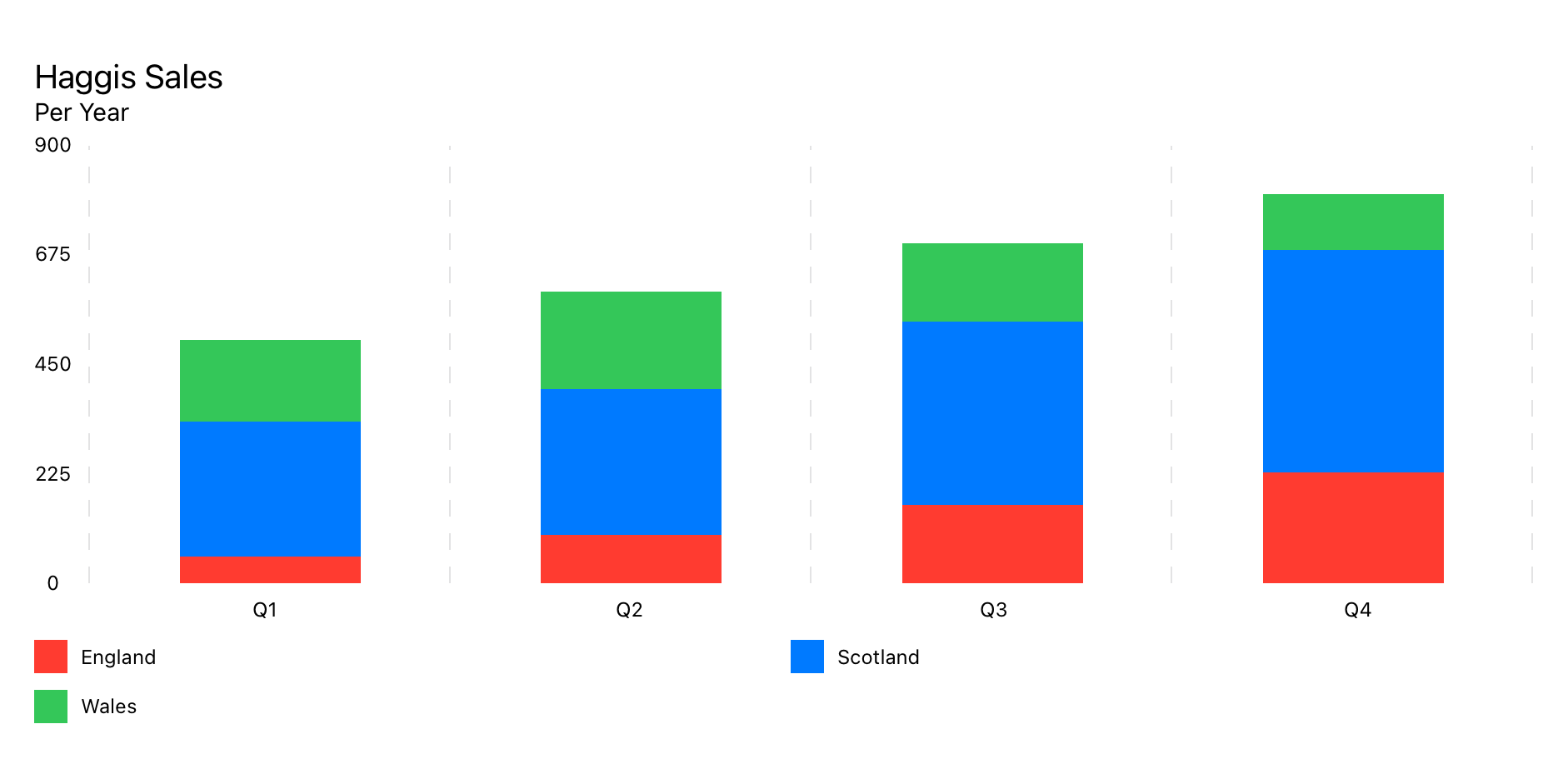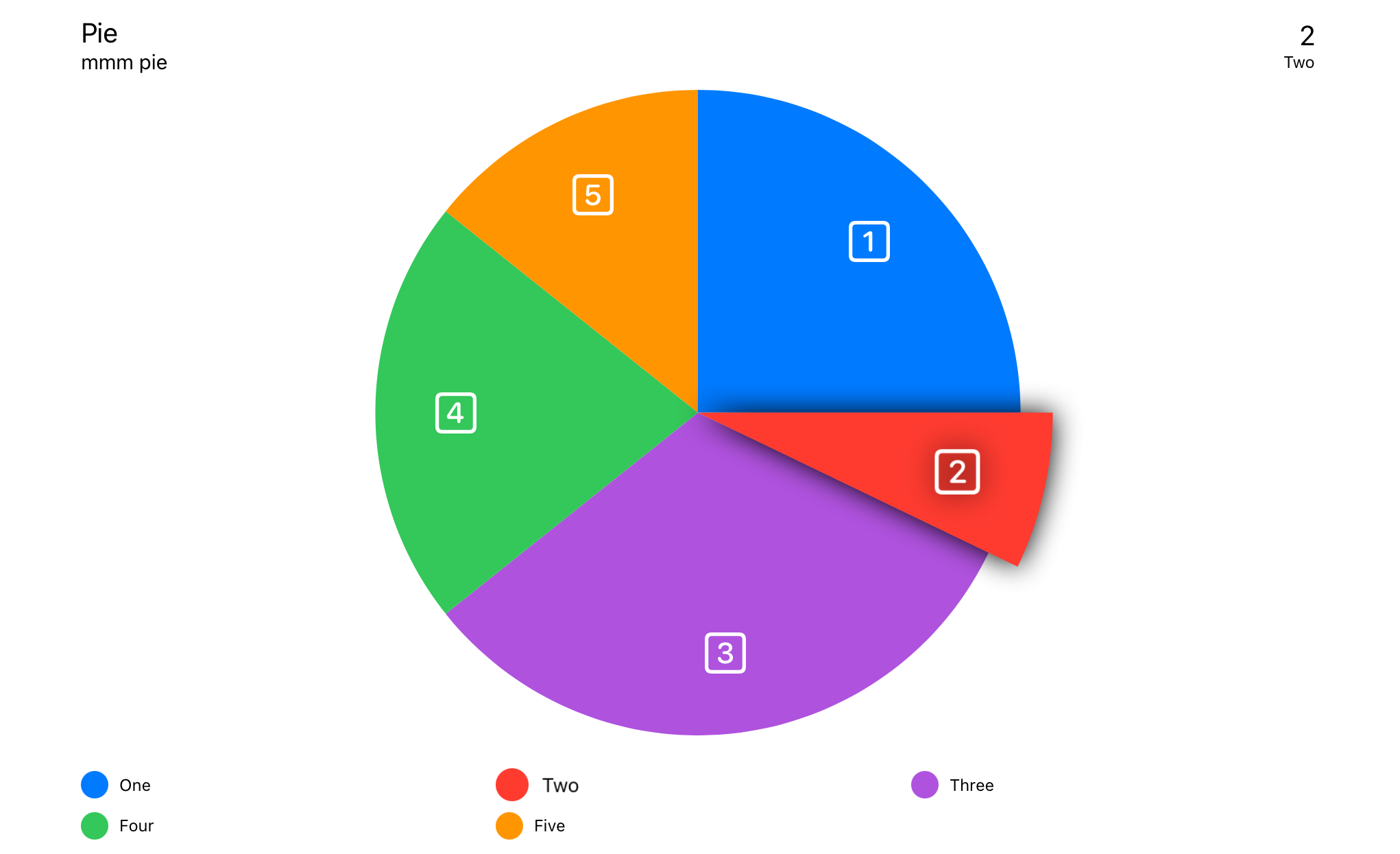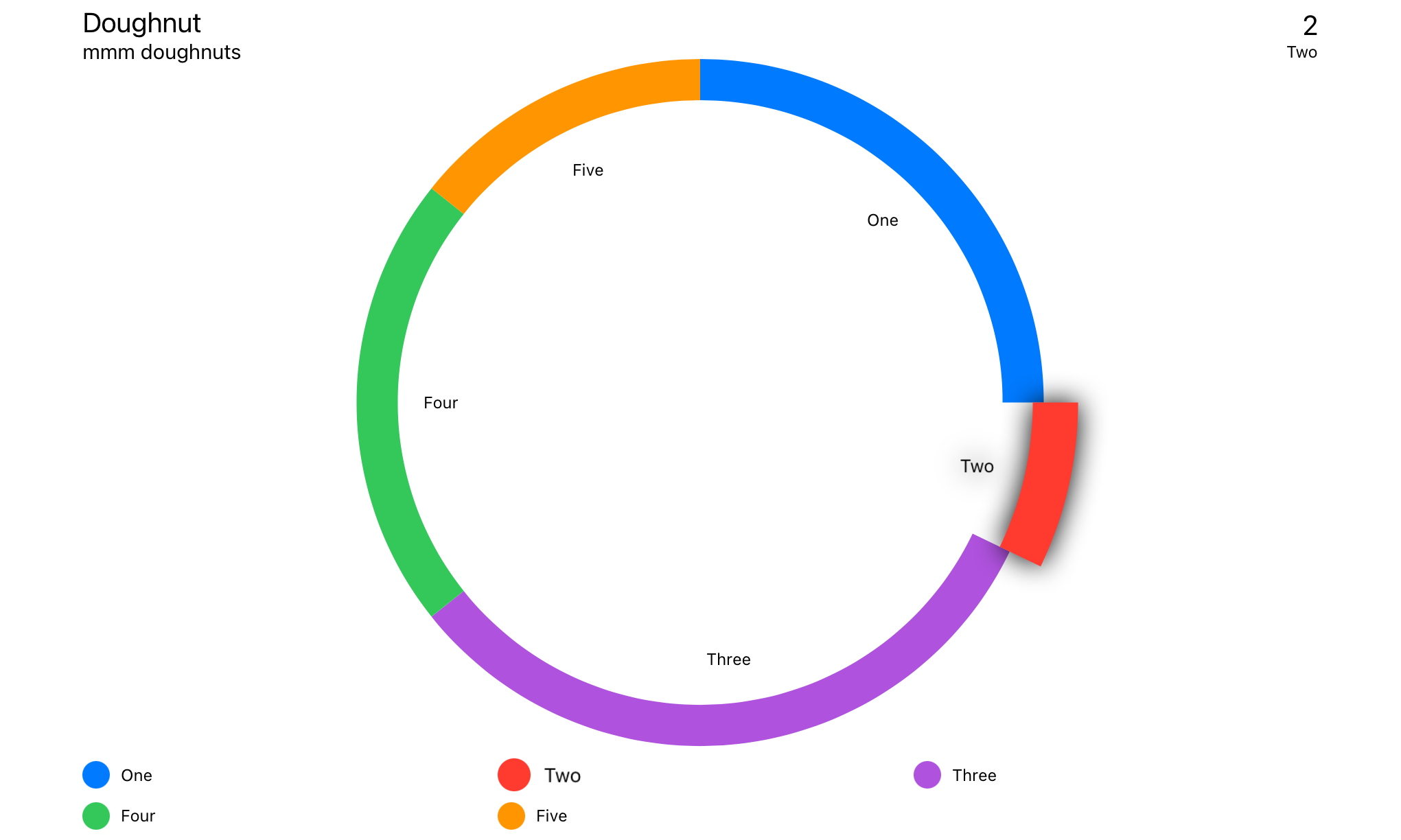A charts / plotting library for SwiftUI. Works on macOS, iOS, watchOS, and tvOS and has accessibility features built in.
Uses LineChartData data model.
LineChart(chartData: LineChartData)Uses LineChartData data model.
FilledLineChart(chartData: LineChartData)Uses MultiLineChartData data model.
MultiLineChart(chartData: MultiLineChartData)Uses RangedLineChart data model.
RangedLineChart(chartData: RangedLineChartData)Uses BarChartData data model.
BarChart(chartData: BarChartData)Uses RangedBarChartData data model.
RangedBarChart(chartData: RangedBarChartData)Uses GroupedBarChartData data model.
GroupedBarChart(chartData: GroupedBarChartData)Uses StackedBarChartData data model.
StackedBarChart(chartData: StackedBarChartData)Uses PieChartData data model.
PieChart(chartData: PieChartData)Uses DoughnutChartData data model.
DoughnutChart(chartData: DoughnutChartData)Swift Package Manager
File > Swift Packages > Add Package Dependency...
import SwiftUIChartsIf you have trouble with views not updating correctly, add .id() to your View.
LineChart(chartData: LineChartData)
.id(LineChartData.id)The order of the view modifiers is some what important as the modifiers are various types of stacks that wrap around the previous views.
Detects input either from touch of pointer. Finds the nearest data point and displays the relevent information where specified.
The location of the info box is set in ChartStyle -> infoBoxPlacement.
.touchOverlay(chartData: CTChartData, specifier: String, unit: TouchUnit)- chartData: Chart data model.
- specifier: Decimal precision for labels.
- unit: Unit to put before or after the value.
Setup within Chart Data --> Chart Style
Displays the information from Touch Overlay if InfoBoxPlacement is set to .infoBox.
The location of the info box is set in ChartStyle -> infoBoxPlacement.
.infoBox(chartData: CTChartData)- chartData: Chart data model.
Displays the information from Touch Overlay if InfoBoxPlacement is set to .floating.
The location of the info box is set in ChartStyle -> infoBoxPlacement.
.floatingInfoBox(chartData: CTChartData)- chartData: Chart data model.
Displays the metadata about the chart, set in Chart Data -> ChartMetadata
Displays the information from Touch Overlay if InfoBoxPlacement is set to .header.
The location of the info box is set in ChartStyle -> infoBoxPlacement.
.headerBox(chartData: CTChartData)Displays legends.
.legends()Lays out markers over each of the data point.
Shows a marker line at the average of all the data points.
.averageLine(chartData: CTLineBarChartDataProtocol,
markerName: "Average",
labelPosition: .yAxis(specifier: "%.0f"),
lineColour: .primary,
strokeStyle: StrokeStyle(lineWidth: 3, dash: [5,10]))- chartData: Chart data model.
- markerName: Title of marker, for the legend.
- labelPosition: Option to display the markers’ value inline with the marker.
- labelColour: Colour of the Text.
- labelBackground: Colour of the background.
- lineColour: Line Colour.
- strokeStyle: Style of Stroke.
Configurable Point of interest
.yAxisPOI(chartData: CTLineBarChartDataProtocol,
markerName: "Marker",
markerValue: 123,
labelPosition: .center(specifier: "%.0f"),
labelColour: Color.black,
labelBackground: Color.orange,
lineColour: Color.orange,
strokeStyle: StrokeStyle(lineWidth: 3, dash: [5,10]))- chartData: Chart data model.
- markerName: Title of marker, for the legend.
- markerValue: Value to mark
- labelPosition: Option to display the markers’ value inline with the marker.
- labelColour: Colour of the Text.
- labelBackground: Colour of the background.
- lineColour: Line Colour.
- strokeStyle: Style of Stroke.
- Returns: A new view containing the chart with a marker line at a specified value.
Adds vertical lines along the X axis.
.xAxisGrid(chartData: CTLineBarChartDataProtocol)Setup within ChartData -> ChartStyle.
Adds horizontal lines along the Y axis.
.yAxisGrid(chartData: CTLineBarChartDataProtocol)Setup within ChartData -> ChartStyle.
Labels for the X axis.
.xAxisLabels(chartData: CTLineBarChartDataProtocol)Setup within ChartData -> ChartStyle.
Automatically generated labels for the Y axis
.yAxisLabels(chartData: CTLineBarChartDataProtocol, specifier: "%.0f")- specifier: Decimal precision specifier.
Setup within ChartData -> ChartStyle.
yAxisLabelType:
case numeric // Auto generated, numeric labels.
case custom // Custom labels arrayCustom is set from ChartData -> yAxisLabels
A line across the chart to show the trend in the data.
.linearTrendLine(chartData: CTLineBarChartDataProtocol,
firstValue: Double,
lastValue: Double,
lineColour: ColourStyle,
strokeStyle: StrokeStyle)Lays out markers over each of the data point.
.pointMarkers(chartData: CTLineChartDataProtocol)Setup within Data Set -> PointStyle.
Adds an independent line on top of FilledLineChart.
.filledTopLine(chartData: LineChartData,
lineColour: ColourStyle,
strokeStyle: StrokeStyle)Allows for a hard line over the data point with a semi opaque fill.
struct LineChartDemoView: View {
let data : LineChartData = weekOfData()
var body: some View {
VStack {
LineChart(chartData: data)
.pointMarkers(chartData: data)
.touchOverlay(chartData: data, specifier: "%.0f")
.yAxisPOI(chartData: data,
markerName: "Step Count Aim",
markerValue: 15_000,
labelPosition: .center(specifier: "%.0f"),
labelColour: Color.black,
labelBackground: Color(red: 1.0, green: 0.75, blue: 0.25),
lineColour: Color(red: 1.0, green: 0.75, blue: 0.25),
strokeStyle: StrokeStyle(lineWidth: 3, dash: [5,10]))
.yAxisPOI(chartData: data,
markerName: "Minimum Recommended",
markerValue: 10_000,
labelPosition: .center(specifier: "%.0f"),
labelColour: Color.white,
labelBackground: Color(red: 0.25, green: 0.75, blue: 1.0),
lineColour: Color(red: 0.25, green: 0.75, blue: 1.0),
strokeStyle: StrokeStyle(lineWidth: 3, dash: [5,10]))
.averageLine(chartData: data,
strokeStyle: StrokeStyle(lineWidth: 3, dash: [5,10]))
.xAxisGrid(chartData: data)
.yAxisGrid(chartData: data)
.xAxisLabels(chartData: data)
.yAxisLabels(chartData: data)
.infoBox(chartData: data)
.headerBox(chartData: data)
.legends(chartData: data, columns: [GridItem(.flexible()), GridItem(.flexible())])
.id(data.id)
.frame(minWidth: 150, maxWidth: 900, minHeight: 150, idealHeight: 250, maxHeight: 400, alignment: .center)
}
.navigationTitle("Week of Data")
}
static func weekOfData() -> LineChartData {
let data = LineDataSet(dataPoints: [
LineChartDataPoint(value: 12000, xAxisLabel: "M", description: "Monday"),
LineChartDataPoint(value: 10000, xAxisLabel: "T", description: "Tuesday"),
LineChartDataPoint(value: 8000, xAxisLabel: "W", description: "Wednesday"),
LineChartDataPoint(value: 17500, xAxisLabel: "T", description: "Thursday"),
LineChartDataPoint(value: 16000, xAxisLabel: "F", description: "Friday"),
LineChartDataPoint(value: 11000, xAxisLabel: "S", description: "Saturday"),
LineChartDataPoint(value: 9000, xAxisLabel: "S", description: "Sunday")
],
legendTitle: "Steps",
pointStyle: PointStyle(),
style: LineStyle(lineColour: ColourStyle(colour: .red), lineType: .curvedLine))
let metadata = ChartMetadata(title: "Step Count", subtitle: "Over a Week")
let gridStyle = GridStyle(numberOfLines: 7,
lineColour : Color(.lightGray).opacity(0.5),
lineWidth : 1,
dash : [8],
dashPhase : 0)
let chartStyle = LineChartStyle(infoBoxPlacement : .infoBox(isStatic: false),
infoBoxBorderColour : Color.primary,
infoBoxBorderStyle : StrokeStyle(lineWidth: 1),
markerType : .vertical(attachment: .line(dot: .style(DotStyle()))),
xAxisGridStyle : gridStyle,
xAxisLabelPosition : .bottom,
xAxisLabelColour : Color.primary,
xAxisLabelsFrom : .dataPoint(rotation: .degrees(0)),
yAxisGridStyle : gridStyle,
yAxisLabelPosition : .leading,
yAxisLabelColour : Color.primary,
yAxisNumberOfLabels : 7,
baseline : .minimumWithMaximum(of: 5000),
topLine : .maximum(of: 20000),
globalAnimation : .easeOut(duration: 1))
return LineChartData(dataSets : data,
metadata : metadata,
chartStyle : chartStyle)
}
}FONTS
Y Axis - caption X Axis Title - caption Y Axis Title - caption
Header Box ------------------
Chart Title - title3 Chart Subtitle - subheadline
Value - title3 Description - subheadline
Touch Overlay Box ------------------
Description - subheadline Value - title3
